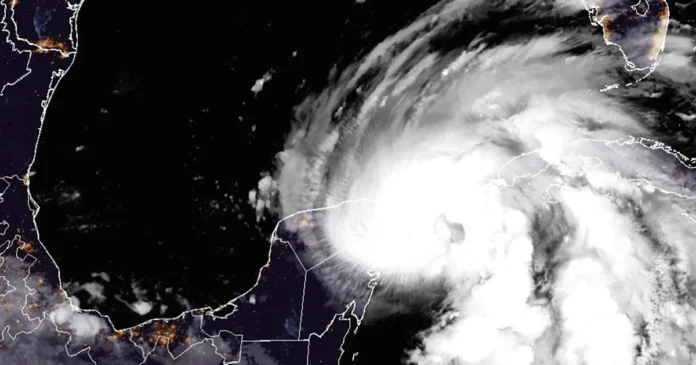Hurricane Helene has quickly become stronger as it nears the U.S. Gulf Coast, progressing into a formidable Category 3 hurricane. On September 25, 2024, the hurricane is forecasted to hit the Big Bend area of Florida, carrying dangerous winds, intense rainfall, and a storm surge exceeding 10 feet. Forecasters are predicting that this hurricane could be one of the most dangerous storms of the year, with a significant impact expected for Florida and the surrounding Gulf Coast states.
Hurricane Helene’s trajectory
Hurricane alerts have been released throughout Florida, particularly in the Panhandle region, where Helene is expected to make landfall. The National Hurricane Center predicts that the storm may strengthen more before reaching the coast on Thursday night. Meteorologists have cautioned locals to get ready for powerful winds over 110 mph, heavy rainfall, and sudden flooding in areas with low elevation.
The storm is expected to weaken once it reaches Florida and continues inland, but the risk of severe weather, such as flooding, will remain in the Southeastern United States. Evacuations have been mandated for coastal areas, and local officials are advising individuals to stay informed and adhere to safety measures.
Potential Impact and Preparations
Florida Governor Ron DeSantis has declared a state of emergency in the affected regions, mobilizing resources and first responders to ensure swift action. The hurricane is expected to cause widespread power outages, property damage, and significant disruptions to daily life. Experts are also concerned about the storm’s effects on the region’s infrastructure and economy, with Helene’s landfall likely to be destructive.
Public officials are advising residents to stock up on emergency supplies, brace for extended periods without power, and evacuate if necessary. Many communities in the storm’s path are preparing shelters for those seeking refuge from Helene’s potentially catastrophic effects.
Global and Local Response
International humanitarian organizations are on standby as Florida prepares for the storm’s full impact. The Federal Emergency Management Agency (FEMA) is coordinating with state and local governments to provide aid and resources. Additionally, rescue teams and disaster recovery operations are being prepared in anticipation of the hurricane’s aftermath. The current situation has reignited discussions about climate change and its role in the increasing frequency and intensity of hurricanes. Florida and the Gulf Coast, already familiar with the destructive power of hurricanes, face another major test of their resilience with the arrival of Hurricane Helene.



